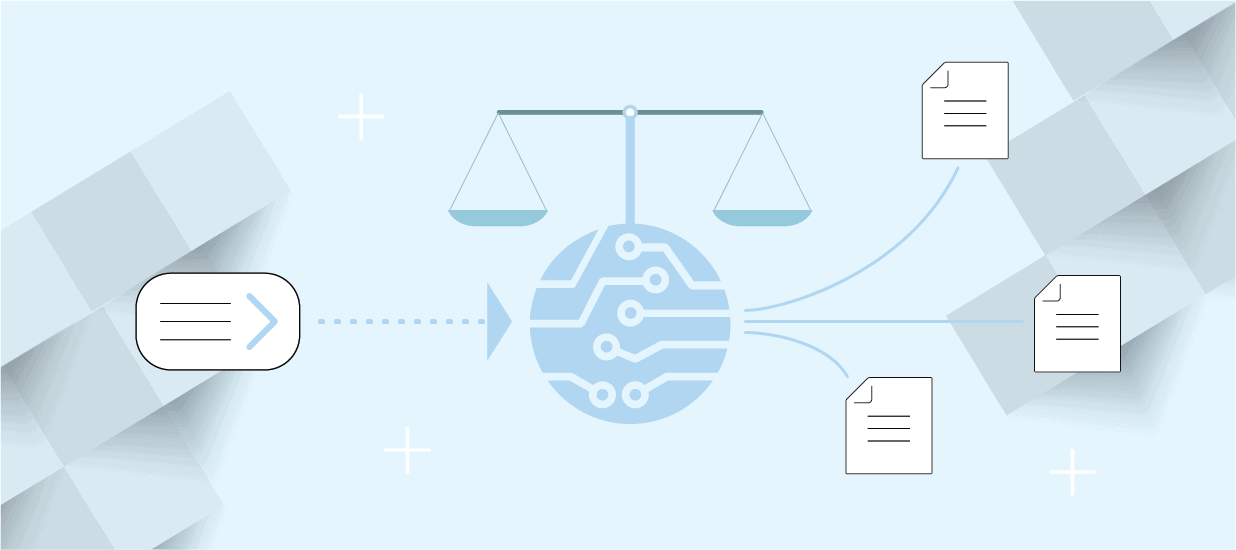4 minute read
Using AI for market research is transforming how businesses gather insights, understand customer behavior, and make smarter decisions. This article offers insight and tips for product professionals.
Key Takeaways
- AI is reshaping market research in 2025 and beyond, changing how businesses gather, analyze, and act on customer and competitor data.
- Marketing is one of the functions most disrupted by AI, with efficiency gains, new insights, and innovative applications leading the way.
- AI supports activities ranging from simulating customer behaviors to predicting market trends, moving research beyond traditional methods.
- Its greatest strengths lie in speed and scalability, enabling rapid, large-scale analysis.
- To fully benefit, organizations must follow best practices, stay aware of industry trends, and exercise caution to ensure ethical and reliable outcomes.
Benefits of Using AI in Market Research
AI offers transformative advantages for market research, making it a game-changer for both B2B and B2C contexts:
- Speed and Efficiency: AI automates labor-intensive tasks such as data cleaning, survey design, and analysis, freeing researchers to focus on strategic decisions.
- Deep Insights from Unstructured Data: By processing vast datasets—like social media posts, customer reviews, or open-ended survey responses—AI uncovers sentiments, trends, and patterns that traditional methods might overlook.
- Synthetic Data and Simulation: AI creates synthetic customer profiles and simulates behaviors, enabling firms to test ideas early without costly fieldwork.
- Personalization and Prediction: It powers tailored marketing strategies and predictive models, helping businesses anticipate customer needs and optimize campaigns.
- Scalability: AI handles massive datasets, analyzing billions of conversations or generating insights for niche segments with ease. It can also manage large, complex sets of data that include web searches, synthesizing information from diverse sources and generating summary results at scale.
These capabilities position AI as a pivotal tool for modern market research, driving innovation across industries.
How to Use AI for Market Research: Practical Advice
Step 1: Define Clear Research Objectives
Just because AI is part of the process does not mean research objectives should be vague or left entirely to automated systems—clear human direction is essential. This is not new: all research, whether using AI or not, begins with a well‑formed purpose, desired outcome, and clearly defined scope, forming the basis for effective and credible results.
1. Define the Research Objective
- What to do: Clearly state the primary goal or question the research aims to address. This sets the foundation for the scope.
2. Identify Key Research Questions or Hypotheses
- What to do: List specific questions or hypotheses that guide the research. These should be focused and answerable within the project’s constraints.
3. Specify the Research Boundaries
- What to do: Define what is included and excluded in the project to set clear limits. This can include geographical scope, temporal scope, industry scope, segment scope, competitors and exclusions
4. Outline the Methodology
- What to do: Briefly describe the research approach to clarify how the scope will be addressed.
- For example: A product may use use a mixed-methods approach, including:
- Desk research to collect feature lists and pricing from competitors’ websites and third-party reports
- Analysis of, say, 50-100 user reviews per competitor on platforms like G2 and Capterra, IT Central Station to identify pain points.
5. Highlight Deliverables
- What to do: Specify the tangible outputs of the project.
- For example: The product manager will produce a competitive analysis report (10-15 pages), a feature comparison matrix (in Excel or Google Sheets), and a slide deck summarizing key findings for the product team.
8. Validate with Stakeholders
- What to do: Share the scope with key stakeholders (e.g., product team, marketing, or leadership) to ensure alignment.
- How to do it: The product manager should present the scope in a team meeting or share a draft document via email, requesting feedback on focus areas (e.g., specific competitors or features) and timeline feasibility.
- Why it matters: Stakeholder buy-in prevents misunderstandings and ensures the scope supports product goals.
Step 2: Select Appropriate AI Tools
Choose tools tailored to your research needs. AI’s role in enhancing customer service and content creation is well-established, but its market research applications are equally robust. Below is a curated list of top AI tools for market research in 2025, based on industry recommendations:
Start with accessible platforms like ChatGPT’s free tier to experiment before scaling to enterprise solutions.
| Use Case | Example Tools | Typical Features |
| Survey text categorization, insight generation | Displayr | AI-driven text analytics, natural language interface, visualization |
| Summarizing reports, predicting market shifts | ChatGPT | Text and sentiment analysis, trend prediction |
| Customer experience, employee attrition analysis | Qualtrics | Analyzes billions of conversations, predictive modeling |
| Consumer research automation, segmentation | Quantilope | Automated survey creation, AI co-pilot for insights |
| Brand tracking, trend detection |
Brandwatch | Social listening, sentiment analysis from online data |
| Personalized marketing, predictive analytics | Synerise | Behavioral analysis, unified customer profiles |
| Competitive intelligence, sales enablement | Crayon | Competitor monitoring, dynamic battlecards |
| Content optimization, SERP monitoring | Semrush | SEO and keyword analysis |
| Emerging trend identification, crisis response | Talkwalker | Trend forecasting in 127+ languages |
| Sentiment analysis tied to business metrics | Chattermill | Unifies feedback from surveys and social channels |
| Niche segment research enhancement | Fairgen | Synthetic sample boosters, insights decks |
| Professional network scanning, B2B research | NewtonX | AI for niche B2B audience identification |
| Brand research, consumer behavior analysis | Canvs AI | Emotion measurement, AI assistant |
| Insights without fieldwork | Yabble | Virtual audiences for synthetic data |
| Automated qualitative research | BoltChatAI | AI-generated discussion guides, 24-hour results |
Step 3: Implement AI Strategically
- Desk Research and Data Synthesis: Use AI for initial scans of public data, such as social media or industry reports, to identify trends. Integrate with qualitative methods like interviews for richer insights.
- Human-AI Collaboration: Treat AI as a partner, not a replacement. Use it for brainstorming, transcribing interviews, or analyzing open-ended responses, but validate outputs with human expertise.
- Start Small, Scale Up: Begin with tasks like generating survey questions or summarizing reports, then expand to complex applications like predictive modeling or competitor analysis.
- Ethical Application: Ensure high-quality respondent data and use AI to complement, not replace, human-centered research approaches.
AI’s ability to process unstructured data and simulate customer interactions makes it ideal for early-stage innovation, such as testing new product concepts. For instance, firms can use AI to create virtual focus groups, saving time and costs compared to traditional methods.
Where to Use Caution: Risks and Limitations
Despite its potential, AI has limitations that require careful navigation. Human oversight is critical to balance its capabilities and avoid pitfalls. Here are key risks and mitigation strategies:
- Data Quality and Hallucinations: AI can generate inaccurate or fabricated outputs, especially if trained on outdated or incomplete data. Mitigation: Cross-verify AI outputs with primary data and human review.
- Bias in Data Sets: AI may amplify biases in training data, leading to skewed insights or discriminatory outcomes. Mitigation: Use diverse datasets to reduce the risk of bias.
- Privacy and Compliance Risks: Handling large datasets risks violating regulations like GDPR, with potential data breaches or IP issues. Mitigation: Implement robust data privacy measures and ensure compliance with consent protocols.
- Overreliance on AI: Excessive dependence can diminish human judgment, missing nuanced behaviors or producing generic outputs. Mitigation: Maintain human oversight and transparent processes.
- Contextual Limitations: AI may struggle with industry-specific nuances, particularly in complex B2B markets. Mitigation: Combine AI with domain expertise for accuracy.
- AI Search Result Quality: AI search tools return results based on relevance to a query, not an assessment of the quality or correctness of the information itself. Mitigation: Researchers must critically evaluate sources and validate information before using it.
AI can enhance research, but it’s not a standalone solution. Human judgment remains critical to interpret results and address complex market dynamics.
Conclusion
AI is reshaping market research in 2025, offering unparalleled speed, scalability, and insight generation. By defining clear objectives, selecting the right tools, and integrating AI with human expertise, businesses can unlock its full potential. However, caution is essential to mitigate risks like biases, inaccuracies, and privacy concerns. As AI continues to evolve, staying informed and balancing its capabilities with human oversight will ensure ethical, impactful market research that drives innovation and growth.
Author
-

Will Scott, a distinguished B2B Product Management and Marketing Executive with 31 years of experience, has left an impactful legacy at Google, Cisco Systems, and Northwestern University. His extensive expertise spans renowned organizations, contributing significantly to the realms of product management and marketing. For questions or inquiries, please contact [email protected].
View all posts







